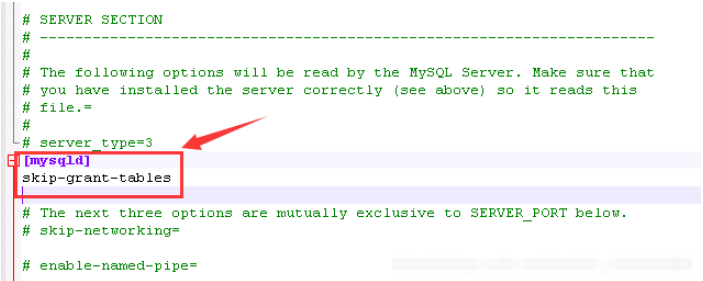Navicat is a database management tool developed by PremiumSoft CyberTech Ltd. in Hong Kong. 1) It supports a variety of database systems, such as MySQL, PostgreSQL, etc., and the interface is intuitive and easy to use. 2) Navicat provides data import and export functions, supporting SQL syntax highlighting and automatic completion. 3) It also supports planning tasks and data model design, optimizes query performance, and solves common problems such as coding and permission settings.
Navicat is a database management tool developed by PremiumSoft CyberTech Ltd. in Hong Kong. The company focuses on providing efficient management and development solutions for various database platforms, and Navicat is a star product under their jurisdiction, which is popular among developers and database administrators around the world.
Explore Navicat: The Power of Database Management
When we talk about database management tools, Navicat is undoubtedly one of the highly respected names. As a veteran programmer, I have used Navicat on several projects, which not only simplifies my workflow, but also greatly improves my productivity. Today, I want to share with you what Navicat is charming and how it has become an integral part of my toolbox.
The basic functions and advantages of Navicat
Navicat supports a variety of database systems, including MySQL, PostgreSQL, Oracle, SQLite, etc., which makes it a very flexible tool. Its interface is intuitive and easy to use, and it can be quickly used by even beginners. What impressed me was Navicat's data import and export function, which is very useful when migrating and backing up data.
# Use Navicat for data export import navicat
# Connect to the database connection = navicat.connect(
host="localhost",
user="root",
password="password",
database="mydatabase"
)
# Export data to CSV file cursor = connection.cursor()
cursor.execute("SELECT * FROM mytable")
data = cursor.fetchall()
with open('output.csv', 'w', newline='') as csvfile:
writer = csv.writer(csvfile)
writer.writerow([i[0] for i in cursor.description]) # Write column name writer.writerows(data) # Write data connection.close()This code shows how to export data using Navicat's Python library. Although Navicat's GUI tools are already powerful enough, its API also provides great flexibility.
Advanced features and usage tips
Navicat's query editor supports SQL syntax highlighting and automatic completion, which greatly improves the efficiency of writing SQL queries. In addition, Navicat also provides powerful data model design tools that can help you visually design and manage database structures.
When using Navicat, I discovered a trick: using Navicat's scheduled task feature, you can automatically perform timed backup or data synchronization tasks. This is a boon for projects that require regular database maintenance.
# Use Navicat to plan tasks import navicat
from datetime import datetime, timedelta
# Connect to the database connection = navicat.connect(
host="localhost",
user="root",
password="password",
database="mydatabase"
)
# Define scheduled task def backup_database():
cursor = connection.cursor()
cursor.execute("BACKUP DATABASE mydatabase TO 'backup.sql'")
cursor.close()
# Set daily backup task next_run = datetime.now() timedelta(days=1)
navicat.schedule_task(backup_database, next_run)
connection.close()This code shows how to set up a daily backup task using Navicat's Python library. This way, you can ensure the security of the database without manual operations.
Performance optimization and best practices
When using Navicat, I found some small tips for performance optimization. For example, when dealing with large data volumes, you can increase query speed by adjusting Navicat's cache settings. In addition, Navicat also supports parallel queries, which can significantly improve performance on multi-core processors.
# Optimize Navicat's query performance import navicat
# Connect to the database connection = navicat.connect(
host="localhost",
user="root",
password="password",
database="mydatabase"
)
# Adjust cache settings connection.set_cache_size(1024 * 1024 * 1024) # Set 1GB cache# Enable parallel query connection.enable_parallel_query()
# Execute the query cursor = connection.cursor()
cursor.execute("SELECT * FROM large_table")
data = cursor.fetchall()
connection.close()This code shows how to optimize query performance by tweaking Navicat's settings. It should be noted that the cache settings and the use of parallel queries need to be adjusted according to the specific database and hardware environment to achieve the best results.
FAQs and Solutions
I have encountered some common problems while using Navicat. For example, you may encounter permission issues when connecting to a database, which can usually be solved by checking the permission settings of the database user. Additionally, Navicat's data export function may sometimes encounter encoding problems, which can be solved by setting the correct character encoding.
# Solve Navicat's encoding problem import navicat
# Connect to the database connection = navicat.connect(
host="localhost",
user="root",
password="password",
database="mydatabase"
)
# Set character encoding connection.set_charset('utf8mb4')
# Export data cursor = connection.cursor()
cursor.execute("SELECT * FROM mytable")
data = cursor.fetchall()
with open('output.csv', 'w', newline='', encoding='utf-8') as csvfile:
writer = csv.writer(csvfile)
writer.writerow([i[0] for i in cursor.description]) # Write column name writer.writerows(data) # Write data connection.close()This code shows how to solve Navicat's data export encoding problem by setting character encoding. In this way, you can ensure that the exported data is correct.
Summarize
As a powerful and easy-to-use database management tool, Navicat has become an indispensable part of my work. Its multi-database support, intuitive interface and powerful functions make database management simpler and more efficient. Through this article sharing, I hope you can also feel the charm of Navicat and make the most of its advantages in your own projects.
The above is the detailed content of Who makes Navicat?. For more information, please follow other related articles on the PHP Chinese website!
 Navicat连接MySQL提示1045错误怎么解决Jun 02, 2023 pm 11:13 PM
Navicat连接MySQL提示1045错误怎么解决Jun 02, 2023 pm 11:13 PM错误提示:1045-Accessdeniedforuser'root''localhost'(usingpassword:YES)navicat连接MySQL数据时遇到1045错误,一般是因为输入的用户名或者密码错误被拒绝访问,此时可以重置MySQL数据库的密码解决。在windows的操作步骤如下:1、找到mysql的my.ini文件,在mysqld关键字下面添加skip-grant-tables,如下图所示:该命令作用是跳过授权表
 浅析Navicat如何修改语言(中文or英文)?Jul 05, 2022 am 10:19 AM
浅析Navicat如何修改语言(中文or英文)?Jul 05, 2022 am 10:19 AMNavicat如何修改语言?下面本篇文章给大家介绍一下将Navicat Premium 的语言改成中文/英文的方法,希望对大家有所帮助!
 navicat premium怎么连接mongodbApr 06, 2024 am 06:51 AM
navicat premium怎么连接mongodbApr 06, 2024 am 06:51 AM本文介绍了如何使用 Navicat Premium 连接 MongoDB,具体步骤如下:建立连接:在 Navicat Premium 中,选择连接选项卡,并在数据库类型中选择 MongoDB。配置连接设置:输入连接名称、主机地址、端口号、用户名、密码和数据库名称。设置高级选项(可选):配置重连次数、重连间隔、SSL 加密和认证数据库。保存连接:单击保存按钮即可创建连接。
 navicat premium怎么导入数据库文件Apr 06, 2024 am 06:57 AM
navicat premium怎么导入数据库文件Apr 06, 2024 am 06:57 AM使用 Navicat Premium 导入数据库文件的步骤如下:连接到目标数据库。导航到“导入向导”。选择要导入的文件。配置导入设置。开始导入。验证导入结果。
 navicat premium怎么连接数据库备份还原Apr 06, 2024 am 06:48 AM
navicat premium怎么连接数据库备份还原Apr 06, 2024 am 06:48 AM在 Navicat Premium 中连接数据库备份并还原数据:连接备份:在“连接”对话框中输入服务器信息、登录凭据,并在“数据库”字段选择备份文件。还原数据:右键单击目标数据库,选择“还原”,选择“从备份还原”并浏览备份文件。配置选项:指定覆盖数据、还原表结构等选项。开始还原:单击“开始”执行还原过程。更新连接:还原后,更新连接信息指向还原后的数据库。
 Navicat for MySQL如何连接本地MySQL数据库-Navicat for MySQL连接本地MySQL数据库的方法Mar 04, 2024 pm 07:30 PM
Navicat for MySQL如何连接本地MySQL数据库-Navicat for MySQL连接本地MySQL数据库的方法Mar 04, 2024 pm 07:30 PM本章节为你们带来的文章是关于NavicatforMySQL软件的,你们晓得NavicatforMySQL如何连接本地MySQL数据库吗?接着,小编就为各位带来了NavicatforMySQL连接本地MySQL数据库的方法,感兴趣的用户一同来下文看看吧。进行打开电脑Navicatformysql已经安装好的,然后进行点击右上角的“连接”选项在弹出的新建连接窗口中,您可以输入连接名称,并将主机名设置为本地数据库,因此只需使用“localhost”,密码留空即可。然后方便连接的数据库是否连接成功的话,
 navicat怎么在表中添加数据Apr 06, 2024 am 07:36 AM
navicat怎么在表中添加数据Apr 06, 2024 am 07:36 AMNavicat中向表中添加数据的步骤:1. 连接数据库;2. 定位目标表;3. 打开数据编辑器;4. 添加新行;5. 输入数据;6. 提交更改(保存或按F2键)。
 navicat premium怎么运行不了Apr 06, 2024 am 07:33 AM
navicat premium怎么运行不了Apr 06, 2024 am 07:33 AM解决 Navicat Premium 无法运行问题的方法:确保系统符合要求,安装 Microsoft Visual C++ 可再发行组件。以管理员身份运行 Navicat Premium,禁用防病毒软件,检查防火墙设置。如果以上步骤无效,请重新安装 Navicat Premium。寻求 Navicat 支持团队的帮助。


Hot AI Tools

Undresser.AI Undress
AI-powered app for creating realistic nude photos

AI Clothes Remover
Online AI tool for removing clothes from photos.

Undress AI Tool
Undress images for free

Clothoff.io
AI clothes remover

AI Hentai Generator
Generate AI Hentai for free.

Hot Article

Hot Tools

Dreamweaver CS6
Visual web development tools

Notepad++7.3.1
Easy-to-use and free code editor

Safe Exam Browser
Safe Exam Browser is a secure browser environment for taking online exams securely. This software turns any computer into a secure workstation. It controls access to any utility and prevents students from using unauthorized resources.

SublimeText3 English version
Recommended: Win version, supports code prompts!

ZendStudio 13.5.1 Mac
Powerful PHP integrated development environment






